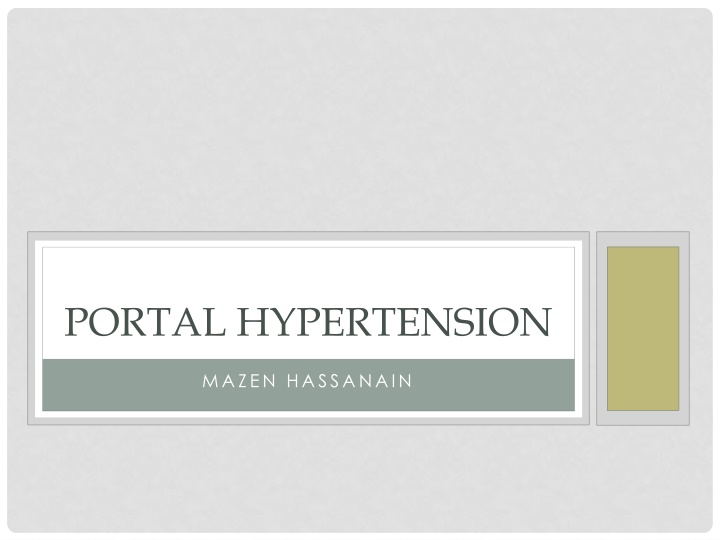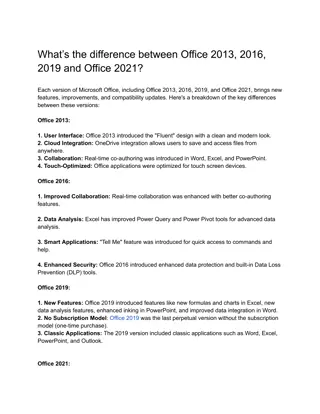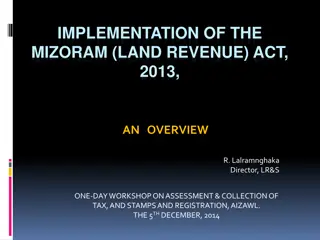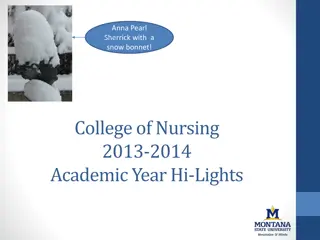
Portal Hypertension: Causes, Symptoms, and Treatment Options
Explore the causes, symptoms, and treatment options for portal hypertension, a condition often associated with cirrhosis. Learn about the various treatment approaches including surgery and shunt operations. Find out more about managing complications like ascites and gastroesophageal varices to improve the quality of life for patients with this condition.
Download Presentation

Please find below an Image/Link to download the presentation.
The content on the website is provided AS IS for your information and personal use only. It may not be sold, licensed, or shared on other websites without obtaining consent from the author. If you encounter any issues during the download, it is possible that the publisher has removed the file from their server.
You are allowed to download the files provided on this website for personal or commercial use, subject to the condition that they are used lawfully. All files are the property of their respective owners.
The content on the website is provided AS IS for your information and personal use only. It may not be sold, licensed, or shared on other websites without obtaining consent from the author.
E N D
Presentation Transcript
PORTAL HYPERTENSION MAZEN HASSANAIN
CAUSES Cirrhosis Non-cirrhosis
SYMPTOMS Asymptomatic Complications Gastroesophageal varices Ascites Splenomegaly Underlying disease
TREATMENT OF BLEEDING Initial therapy: hemodynamic resuscitation, prevention and treatment of complications Prophylactic antibiotics, preferably before endoscopy (although effectiveness has also been demonstrated when given after). Suggest intravenous ceftriaxone (1 g IV) or Cipro (400 mg IV BID) UGD should be performed for diagnosis and possible treatment Suggest terlipressin in countries where it is available and somatostatin or octreotide (50 mcg bolus followed by 50 mcg/hour by intravenous infusion) where terlipressin is unavailable
CONTINUE Salvage treatment TIPS (transjugular intrahepatic portosystemic shunt) Surgery is one with well preserved liver function who fails emergent endoscopic treatment and has no complications from the bleeding or endoscopy. The choice of surgery usually depends upon the availability, training, and expertise of the surgeon. Although a selective shunt has some physiologic advantages, it may significantly exacerbate marked ascites. Thus, a portacaval shunt would be preferable in patients with marked ascites
SHUNT OPERATIONS CAN BE CATEGORIZED AS FOLLOWS: Nonselective those that decompress the entire portal tree, such as portacaval shunts Selective those that compartmentalize the portal tree into a decompressed variceal system while maintaining sinusoidal perfusion via a hypertensive superior mesenteric-portal compartment, such as a distal splenorenal shunt Partial those that incompletely decompress the entire portal tree and thereby also maintain some hepatic perfusion Nonshunt operations generally include either esophageal transection (in which the distal esophagus is transected and then stapled back together after varices have been ligated) or devascularization of the gastroesophageal junction (Sugiura procedure).
Maintain a hemoglobin of approximately 8 g/dL. Short-term (maximum seven days) antibiotic prophylaxis should be instituted in any patient with cirrhosis and GI hemorrhage. Pharmacologic therapy (somatostatin or its analogue octreotide) should start as soon as bleeding is suspected and continue for 3-5 days after confirmation. Upper endoscopy, performed within 12 hours, should be used to make the diagnosis and to treat variceal hemorrhage either with endoscopic variceal ligation or sclerotherapy. TIPS is indicated in patients in whom hemorrhage from esophageal varices cannot be controlled or in whom bleeding recurs despite combined pharmacological and endoscopic therapy. Balloon tamponade should be used as a temporizing measure (maximum 24 hours) in patients with uncontrollable bleeding for whom a more definitive therapy (eg, TIPS or endoscopic therapy) is planned.
COMMON SURGICAL PROBLEMS Liver resection: Benign Hydatid cyst Abscess Large adenoma (5 cm) Intrahepatic biliary stones Oriental cholangiohepatitis Heamangioma Multiple cysts FNH Choledochal cyst Cystadenoma
COMMON SURGICAL PROBLEMS Malignant Primary liver cancers HCC Cholangiocarcinoma Secondary liver cancers Colorectal cancer Neuroendocrine tumors Others (isolated, stable, chemo responsive)
ECHINOCOCCOSIS DISEASE Parasitic infection Oral treatment Surgical resection Biliary communication
HCC Cirrhosis Child A Non-cirrhosis Roles of resectability Survival benefit
CHOLANGIOCARCINOMA Resectability The role of bile ducts
CRC METASTASIS Portal connection Survival benefit Limits of resection Increase resectability Decrease disease Increase volume Improve function
LIVER TRANSPLANT Cirrhosis HCV EToH NASH HCC Benign disease PBS
















